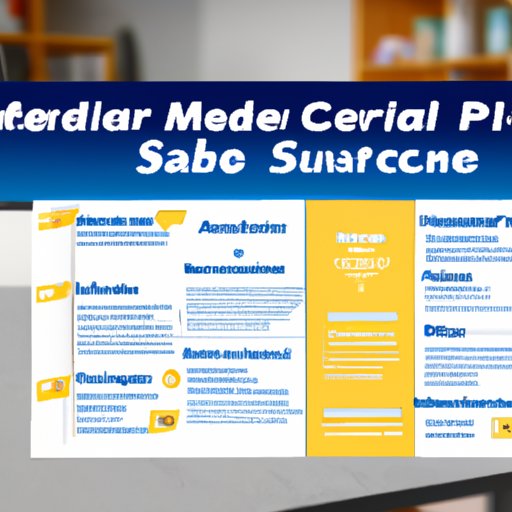Introduction
Medicare is a government-run health insurance program that provides coverage to those who are 65 years of age or older, as well as individuals with specific disabilities. It covers hospital care, doctor’s visits, and other medical services. While there are several different types of Medicare plans, they all have similar eligibility requirements and provide access to medically necessary services. In this article, we will explore the eligibility criteria for Medicare, when you can receive benefits, and how to maximize your Medicare benefits.
Exploring the Eligibility Criteria for Medicare
To be eligible for Medicare, you must meet certain criteria. Generally, these include being a citizen or permanent resident of the United States, being at least 65 years old, or having a qualifying disability or end-stage renal disease. Those who qualify for Social Security or Railroad Retirement Board benefits may also be eligible for Medicare.
Age Requirements
The most common way to qualify for Medicare is by reaching the age of 65. Individuals who are younger than 65 may qualify if they have been receiving Social Security Disability Insurance (SSDI) benefits for at least 24 months, or if they have Lou Gehrig’s Disease (ALS).
Disability and End-Stage Renal Disease
Individuals with certain disabilities may also qualify for Medicare. This includes people with end-stage renal disease, which is a permanent kidney failure requiring dialysis or a kidney transplant. Additionally, those who have been receiving SSDI benefits for at least 24 months may qualify for Medicare.

Understanding When You Can Receive Medicare Benefits
Once you have met the eligibility requirements for Medicare, you can start to receive benefits. However, it is important to understand the timing of enrollment and when you can start to use your Medicare benefits.
Enrollment Timing
You can enroll in Medicare during the seven-month period that begins three months before the month of your 65th birthday. This is known as your initial enrollment period. If you miss your initial enrollment period, you can enroll during the general enrollment period, which runs from January 1 through March 31 of each year. Coverage usually begins on July 1.
Open Enrollment Period
In addition to the initial and general enrollment periods, there is an annual open enrollment period from October 15 to December 7. During this time, you can switch from one Medicare plan to another without penalty. This is a good time to evaluate your coverage and make sure you have the best plan for your needs.

Maximizing Your Medicare Benefits: The Basics
Once you are enrolled in Medicare, there are several ways to maximize your benefits. This includes taking advantage of additional coverage options and evaluating your current health needs.
Taking Advantage of Additional Coverage Options
Medicare Part A and Part B provide basic coverage, but you may want to consider adding additional coverage such as a Medicare Advantage plan or a Medicare Supplement plan. These plans can help cover the costs of prescription drugs, dental care, vision care, and other services not covered by traditional Medicare.
Evaluating Your Current Health Needs
It is important to evaluate your current health needs before selecting a plan. Consider any chronic conditions you may have and any medications you take regularly. This will help you determine which type of plan is best suited for your needs. It is also important to review your plan periodically to ensure it still meets your needs.
Conclusion
In conclusion, Medicare is a government-run health insurance program that provides coverage to those who are 65 years of age or older, as well as individuals with certain disabilities. To be eligible for Medicare, you must meet certain criteria, including age and disability requirements. Once you have met the eligibility requirements, you can start to receive benefits. It is important to understand the timing of enrollment and when you can start to use your Medicare benefits. Additionally, there are several ways to maximize your Medicare benefits, such as taking advantage of additional coverage options and evaluating your current health needs.
Summary of Key Points
In summary, to be eligible for Medicare you must meet certain criteria, including age and disability requirements. You can enroll in Medicare during the seven-month period that begins three months before the month of your 65th birthday. There is an annual open enrollment period from October 15 to December 7. Additionally, you can maximize your Medicare benefits by taking advantage of additional coverage options and evaluating your current health needs.
Resources for Further Information
For more information about Medicare, visit the Medicare website. You can also contact your local Social Security office or consult with a health insurance specialist to find out more about the different types of Medicare plans available.
(Note: Is this article not meeting your expectations? Do you have knowledge or insights to share? Unlock new opportunities and expand your reach by joining our authors team. Click Registration to join us and share your expertise with our readers.)
